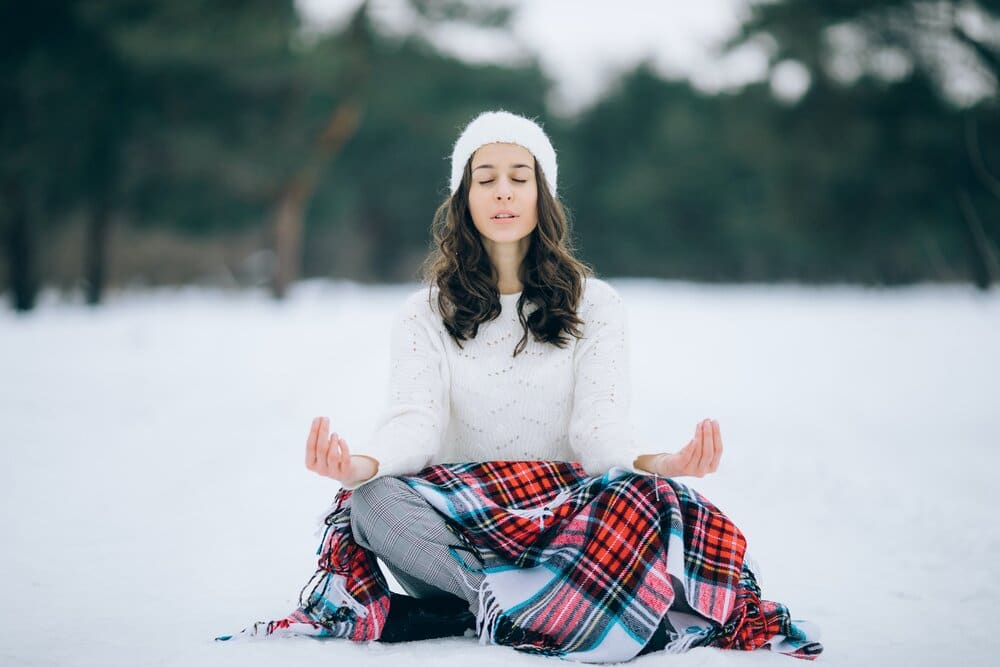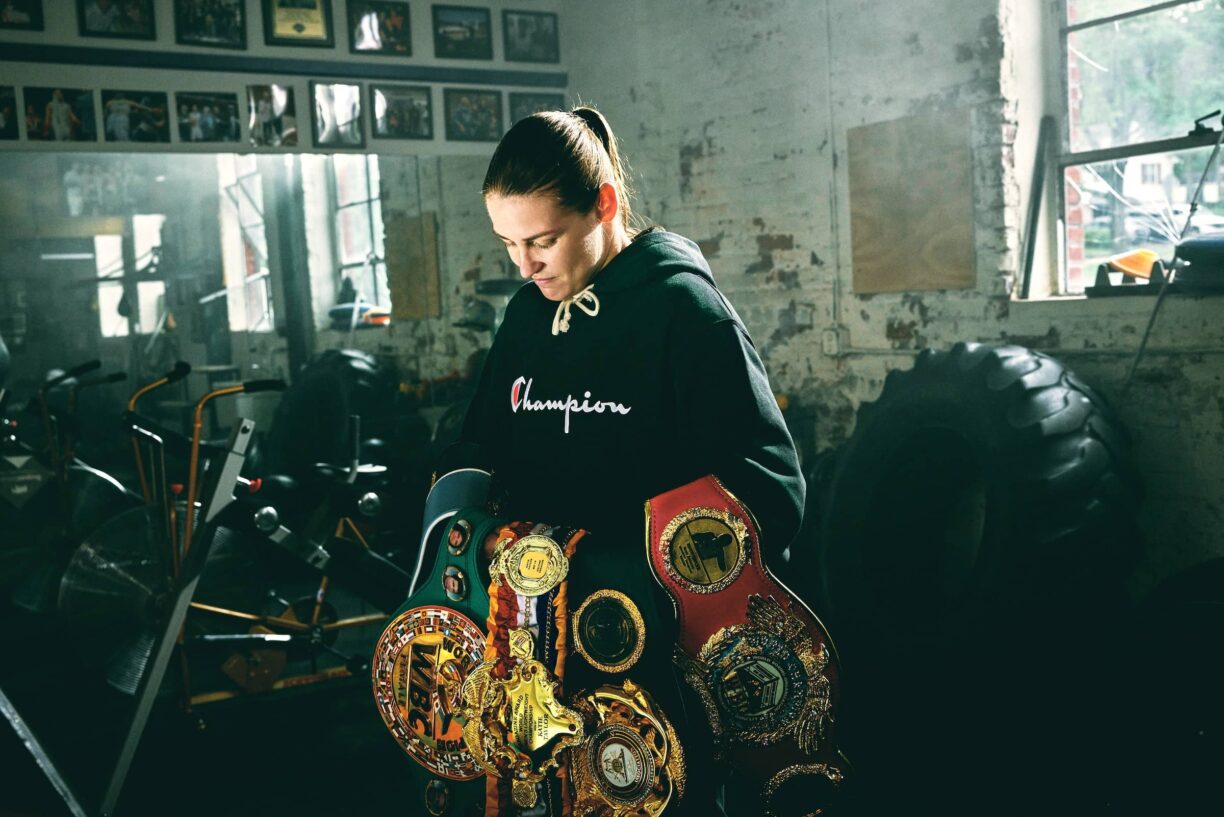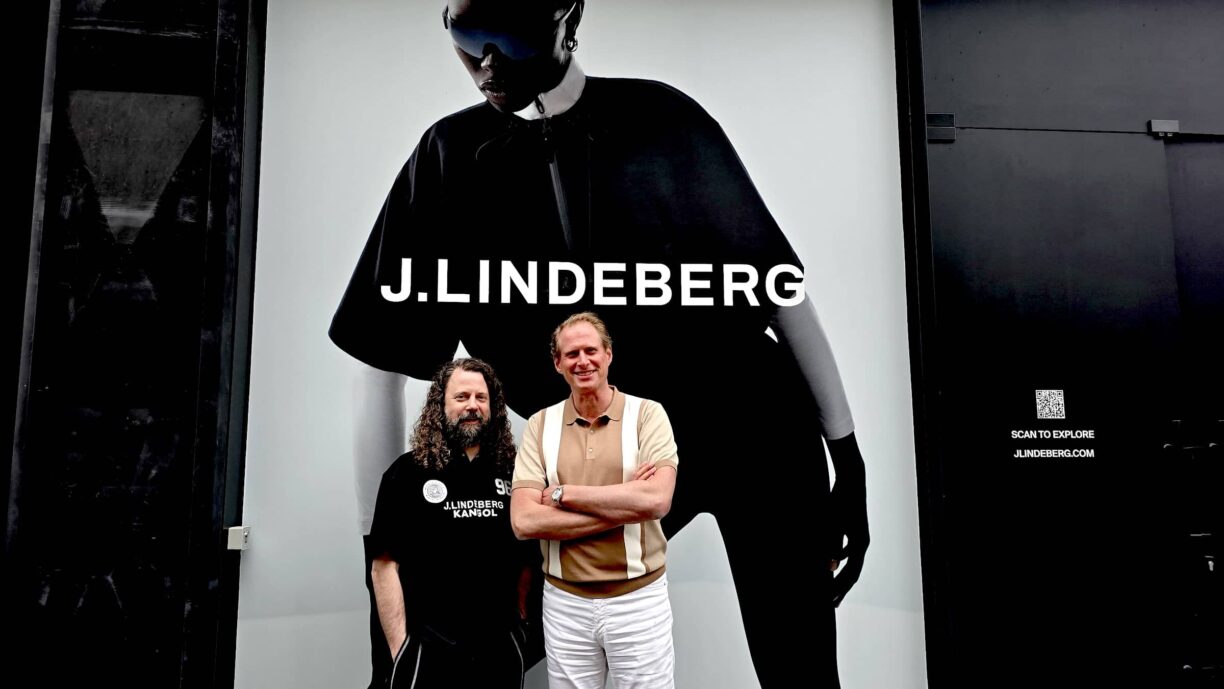Imagine if the tools you needed to beat stress, sleep better and recover faster weren’t packaged up in an expensive app or pricey health supplement, but were already innately available – all you had to do was learn to unlock the potential of your primitive mind.
According to Dutch extreme athlete Wim Hof, also known as ‘The Iceman’, we all have scope to tap into these natural human ‘superpowers’.
It’s easy to see how Hof got his nickname – he’s famous for daredevil acts like climbing Kilimanjaro wearing only shorts and shoes, running a half marathon above the Arctic Circle barefoot, and holding the Guinness World Record for the longest time submerged in an ice bath (one hour, 52 minutes, 42 seconds).
The 61-year-old says he’s able to achieve these extreme feats of survival by using what he’s termed ‘The Wim Hof Method‘ – a three-pillar practice that combines meditation, breathing exercises, and exposure to cold as a means of controlling the body’s autonomous response systems.
The method recently gained attention after being featured in the Netflix series In Goop Health, with Gwyneth Paltrow and her team of ‘wellness gurus’ discussing the technique, which has amassed Hof over a million followers on Instagram and many more around the world who claim his philosophy to be life-changing.
So what exactly does Hof’s approach involve? Here’s what you need to know…
What exactly is the Wim Hof Method?
Hof has been practising his methods for decades, setting his first world record for the farthest swim under ice in the year 2000.
His technique centres around a trio of basic principles, which Hof believes can help you voluntarily activate your sympathetic nervous system (this is part of the autonomic nervous system involved in the body’s ‘flight or flight’ stress response).
1. Cold therapy
One of the perhaps less appealing aspects of the practice involves exposing yourself to icy cold temperatures.
Hof believes this can be done in a variety of ways, like switching to a cold shower in the morning, taking regular ice baths, or safely jumping into cold water at a wild swimming spot, depending on where you live (it’s absolutely vital this is only attempted after training, with supervision, never alone and only once you know it’s safe).
2. Breathing
The second pillar is breathing techniques, that draw comparisons to Pranayama (yogic breathing) and Tibetan Tummo ‘heat’ meditation.
There are two stages to the practice: the first involves taking 30-40 rapid ‘power breaths’ where you inhale deeply and exhale quickly (sort of like you’re mimicking hyperventilating).
The second stage involves taking one deep inhalation, a full exhalation and then holding your breath for around 10 seconds while squeezing all of your muscles (again, these techniques can be quite advanced and it’s best only to attempt after guided training).
3. Commitment
The final piece to the jigsaw puzzle in the Wim Hof Method is sticking to to the practices. The Iceman also uses third eye meditation techniques, where the user visualises a third eye on their forehead, to clear the mind and create a focused atmosphere.
“Over time, we as humans have developed a different attitude towards nature and we’ve forgotten about our inner power.
This is the ability of our body to adapt to extreme temperature and survive within our natural environment,” Hof writes of his philosophy.
“Because we wear clothes and artificially control the temperatures at home and at work, we’ve greatly reduced the natural stimulation of our bodies, atrophying the age-old mechanisms related to our survival and basic function.”
What are the supposed benefits?
Hof claims practising his method over a sustained period of time can lead to health benefits like more energy, less stress and an improved immune system.
He credits taking ice baths and practising his breathing techniques daily for his success in his many endurance feats, brought on, he says, by the physiological benefits that the combination of the two impart.
People have controversially claimed the the Wim Hof Method can improve athletic performance, mental health and even mitigate the symptoms of chronic diseases.
However, while a growing number of studies show that breathing techniques can be effective for things like anxiety and insomnia, there’s conflicting research on whether cold therapy can improve athletic recovery.
Many of Hof’s fans report positive effects in their own wellbeing, although these are largely anecdotal. But a 2014 study found subjects with flu-like symptoms were able to demonstrate an ability to control their nervous system’s response when practising the Wim Hof Method, compared with those that didn’t.
What’s it like to try some Wim Hof at home?
First off, it’s advisable not to attempt the Wim Hof Method without consulting a doctor, especially if you suffer from respiratory issues or pre-existing health problems – and it goes without saying that you can’t just dive straight in to any of the more extreme aspects of these techniques.
But spurred on by Gwyneth Paltrow’s positive review, I’ve been combining cold showers with breathing exercises every morning for two weeks.
The breathing techniques might seem complicated or intimidating at first, but they’re surprisingly easy to do by just following along to a YouTube video. I took 10 minutes before starting work to sit and practice every day.
The first time you try the breathing, it’s not unusual to feel a bit lightheaded or notice some tingling in your body, although if you’re feeling unwell it’s advisable to stop.
I definitely experienced some dizziness during a few of the sessions, which is why it’s important to practice breathing in a comfortable and safe seated position.
Although bordering on tortuous at the time, I found the cold showers were surprisingly a game-changer, and the combination of the two gave me a gentle and natural endorphin buzz.
The biggest positive change I noticed was having more energy in the morning; my mind was clear and my usual pre-coffee ‘brain fog’ dissipated, without the need to rely on caffeine for the same affect.
“It’s a powerful method combining hyperventilation and strong breath holds alongside cold exposure,” says Stuart Sandeman, founder of Breathpod.
“The breathing and holding of breath forces the body into sympathetic response, with a spike of adrenaline.
“The cold exposure has an interesting effect too as it’s a stressful shock for the body, but by going into the cold with a relaxed mind, you start to learn to manage your own stress response,” he adds. “You become better at dealing with stress and can increase your resilience to it.”
Whether it’s just a placebo or founded on fact, there are many others like me who have found some benefits to trying the breathwork and cold therapy techniques.
“It was originally a huge challenge for me, as I only consciously breathe in yoga and I detest the cold with a ferocious passion, but a combination of breathing, meditation and cold showers changed my life in less than a week,” says nutritionist Vivienne Talsmat (viviennetalsmat.com).
“It takes regular and deepening practice though. I always say that you are as healthy as your breath.” Presumably also, your last cold shower.





